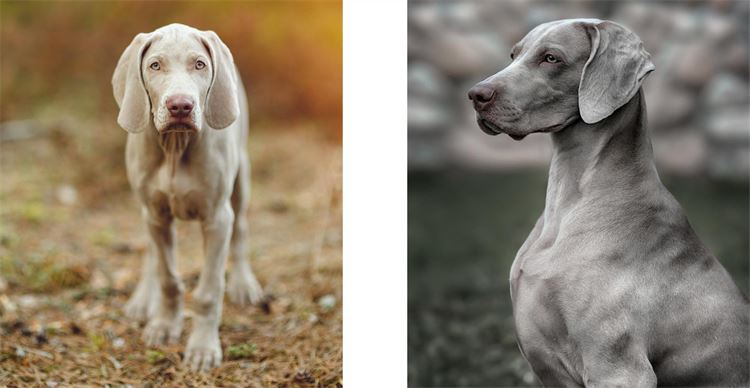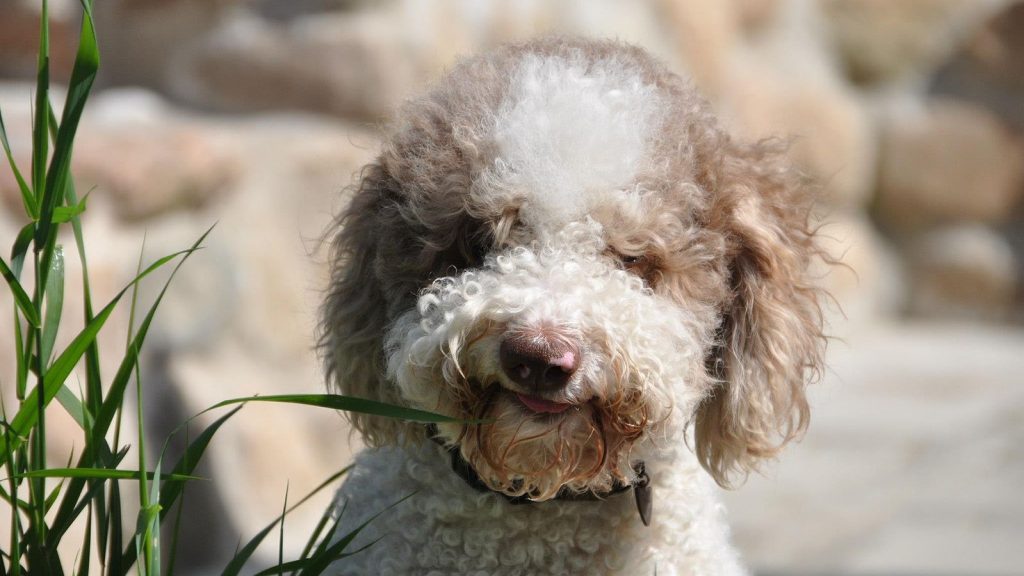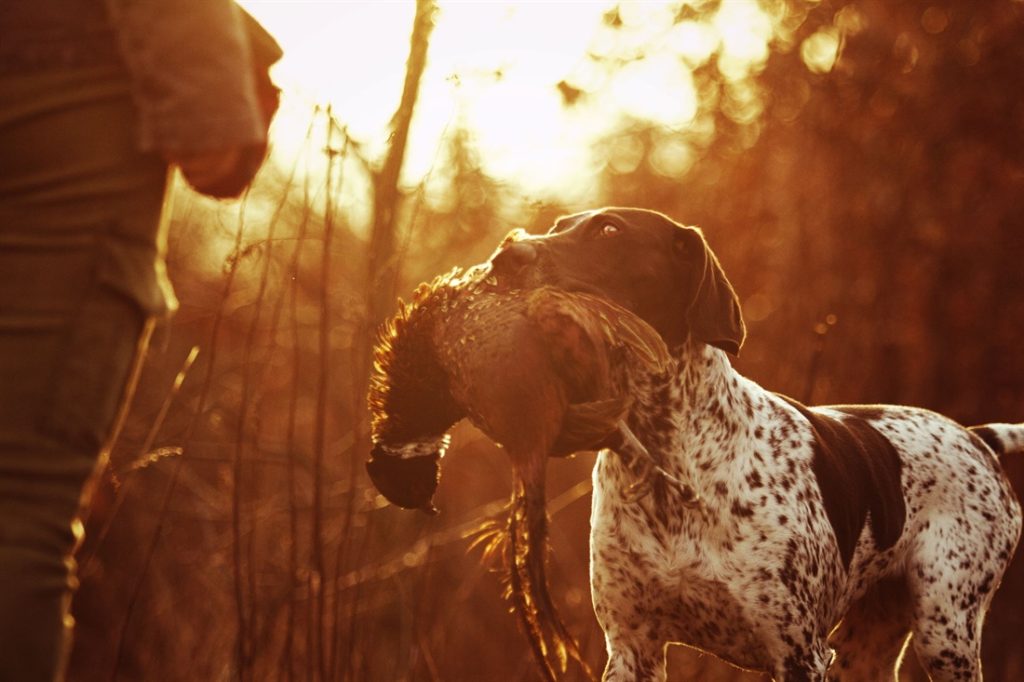Weimaraners
We take a look at another very popular German HPR breed, the weimaraner.
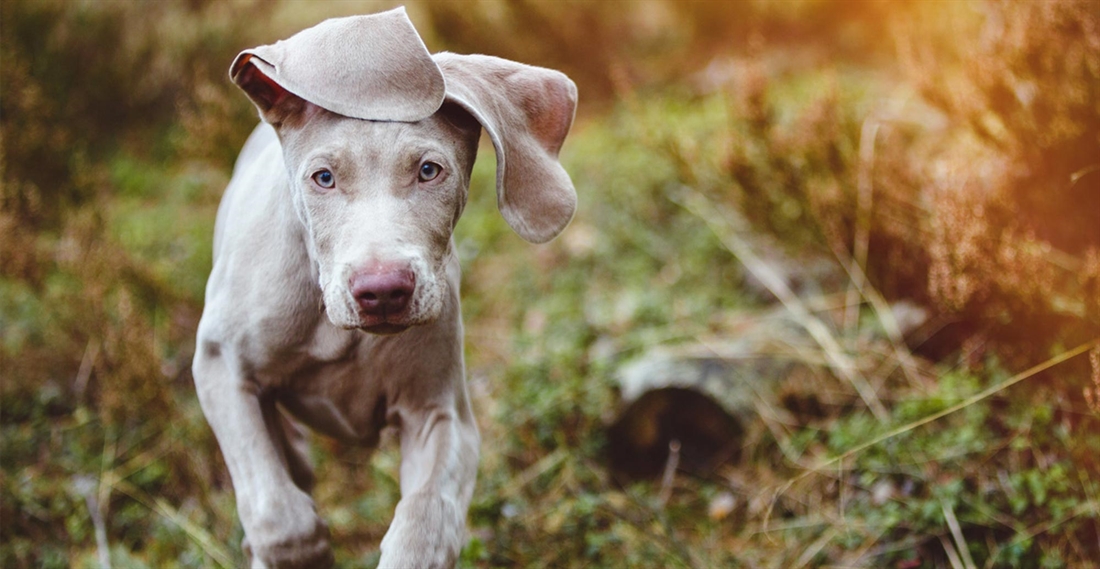
History of the weimaraner:
Though examples of dogs very similar in appearance to the weimaraner are documented as far back as the 13th century, and a Van Dyck painting of a weimaraner-type dog dates back to the 1600s, it is widely regarded that the breed as we know it today was only truly established in the early 1800s by Karl August, Grand Duke of Weimar, and his court in East-Central Germany, hence the name.
Developed for hunting deer, mountain lion, wolf and bear etc., weimaraners descend from a large variety of hounds and pointer breeds, which not only gave them a highly sought-after appearance, shape and size, but favourable traits such as a great sense of smell, good eyes, speed, stamina, courage and intelligence.
It was a rich man’s dog, and in 1897 the Weimaraner Club of Germany was formed to prevent its hunting genetics from being altered by the public. The Club adopted a strict breed standard, created rules as to who could own or purchase a puppy, and would even destroy litters that did not conform to the breed’s standards physically or mentally. It was almost impossible to obtain a weimaraner in Germany at this time, let alone in any another country, but that did not damage the breed’s growing popularity.
As the interest in big game hunting in Germany dwindled, the weimaraner was introduced to hunting and retrieving gamebirds and wildfowl. The breed excelled in this discipline and were favoured over other HPR dogs of this eera as they had a relatively soft mouth for the type of breed which helped minimise meat damage.
Getting hold of a weimaraner continued to remain difficult until the 1940s, when it was first accepted that puppies could be homed in different countries by loyal enthusiasts that agreed to keep to the strict breeding rules. By the 1950s, the breed had been introduced to Britain and became popular worldwide.
How many weimaraner puppies are registered in the UK:
Of the 91,149 gundog puppies registered to the Kennel Club in 2018, 1,265 were weimaraners making them the 7th most popular gundog breed in the UK for the year.
Weimaraner traits and characteristics:
It is widely considered that weimaraners make an energetic, affectionate and gentle family companion, highly sought after for their good looks and shimmering grey coats. Whilst they are generally well tempered, they have developed somewhat of a reputation for being aggressive towards other dogs or small mammals if not socialised at a young age, but it is believed that conflict is due to many dogs actually feeling uneasy or threatened by them due to their ghost-like appearance.
Whilst it is important keep training sessions short and enjoyable, it is worth bearing in mind that weimaraners are intelligent and can be stubborn, responding best to strong and direct leadership. They also love to stick to the owner’s side as much as possible, and like other HPR breeds they are often referred to as velcro dogs – they are best settled living in large homes rather than kennels. Regular contact and daily exercise is a must or they can become destructive.
Though weimaraners are known for hunting purposes, many owners will have their dogs accompany them whilst hiking, running or cycling.
Weimaraner conformation:
They are a large dog with a sleek, athletic and elegant build. They have a large head and long, pendant-shaped ears. Working strains tend to have the tail docked to prevent painful injuries when working cover. Eyes are typically amber, blue or grey.
Their coats are silky smooth and silver-grey in colour, and can be either long or short haired. The length of hair is the sole difference between the long haired and short haired weimaraner, and their shimmering aesthetic has earned the breed the nickname ‘grey ghost’.
Average life expectancy of a weimaraner:
10–13 years.
Weimaraner health issues:
Health concerns related to the weimaraner include gastric dilatation and volvulus (rotation of the stomach), elbow and hip dysplasia, peritoneopericardial diaphragmatic hernia, pododermatitis (inflammation of paws) demodicosis (skin disease), hypertrophic osteodystrophy (bone disease) among others.
Feeding and nutrition – from the Chudleys’ nutritionist:
“As a nutritionist, one designs a diet first and foremost to meet all the nutrient requirements to support a long, active and healthy life.
“For working breeds, fundamental nutrient requirements vary very little, if at all. There may be subtle trend differences between the breeds in terms of certain conditions that are more prevalent in one particular breed over another that may be helped by using appropriate functional nutrition.
“The key differences in nutrient requirements for working dogs stem from the duration and intensity of the work undertaken. The higher the workload, the more energy your dog will require. A very active dog will therefore need to eat more food, and as a result will get more of all the other nutrients it requires, such as protein and vitamins.
“It is important to know where that energy needs to come from. Sprint work requires a diet consisting of more carbohydrate and some fat – a diet of around 22–25% protein and up to 14% fat is preferred – whereas a dog working long days on a moor will rely more on fat and fat reserves – a diet with 24%+ protein and 14%+ fat works best.
“Finally, when it comes to choosing the size of the piece of food, studies have proven that all breeds prefer a kibble of around 14–16mm in diameter.
“So, choose a diet to suit your dog’s workload and type, and one that provides those functional nutritional aspects as well.”
Why do weimaraners make good gundogs?
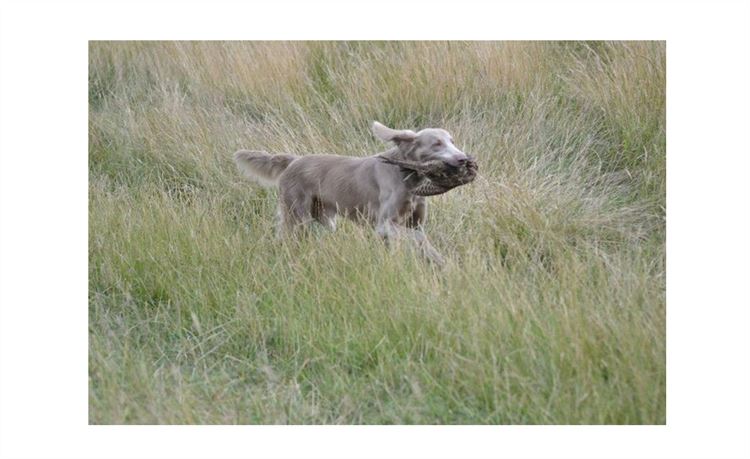
Like other HPR breeds, they are most commonly used for walked-up shooting. When they pick up the scent of a quarry species, weimaraners will stand on ‘point’ – with one front paw lifted from the ground, tail erect, and muzzle pointing towards the quarry.
It is exciting to watch the breed work and pick up the scent of game, and an experienced handler will be able to predict where the quarry is and get into a good position to take a shot before the quarry is flushed – often on command.
Providing the shot is successful, the same dog will also retrieve the game it has just flushed, if it has been taught to do so. Though not quite to the standard of a labrador, for example, weimaraners are relatively soft mouthed and the bird or mammal is rarely damaged beyond the wounds from the shot, ensuring it remains fit for consumption.
Guns not used to shooting over pointing dogs are often amazed at their prowess at finding game, work ethic and stamina – it is not uncommon for a weimaraner to work for lengthy periods of time and cover multiple miles of tough terrain in a single day.
Related Articles
Get the latest news delivered direct to your door
Subscribe to Gundog Journal
Unlock the full potential of your working dog with a subscription to Gundog Journal, the UK’s only dedicated magazine for gundog enthusiasts. Published bi-monthly, this authoritative resource delivers expert training advice, in-depth interviews with top trainers and veterinary guidance to help you nurture a stronger bond with your dog.
With stunning photography and thought-provoking content, Gundog Journal is your essential guide to understanding, training and celebrating your working dog.
Save 10% on shop price when you subscribe, with a choice of packages that work for you. Choose from Print & Digital or Digital only with each journal delivered directly to your door or via the app every other month, plus access to past issues with the digital back issue library.






